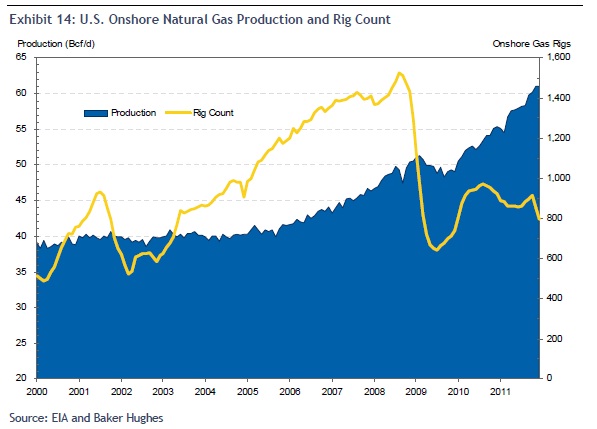Conventional natural gas production typically involves drilling into sandstone and carbonate rock formations to release natural gas that has been trapped by a geologic seal. As natural gas is formed by bacteria or high pressures, it tends to migrate upward as long as the rock has sufficient permeability. The migration will continue until the gas encounters rocks with low permeability, called seal rocks, which trap the migrating gas. The focus of conventional gas exploration is finding these traps. This is more difficule than finding vast shale formations, but until recently advancements in hydraulic fracturing and horizontal drilling, conventional gas exploration was more economic than shale exploration. In the United States, conventional gas production has been in decline for several years and RBC estimates that it only represents roughly 30% of US gas production, though it is still the primary source of production for the rest of the world.
Gulf of Mexico
Natural gas exploration and production in the Gulf of Mexico (GOM) is basically all conventional, representing around 6% of total US gas production and 20% of conventional US gas production.
Onshore US
The largest conventional field in the US is the Hugoton in southwest Kansas, which has approximately 10 tcf to 15 tcf. The conventional onshore Gulf Coast gas plays hae been largely been drilled up, so there is currently little new conventional activity.
Canada
Most of Canada’s gas production comes from the huge Western Canada Sedimentary Basin, representing more than 90% of Canada’s total gas production.

